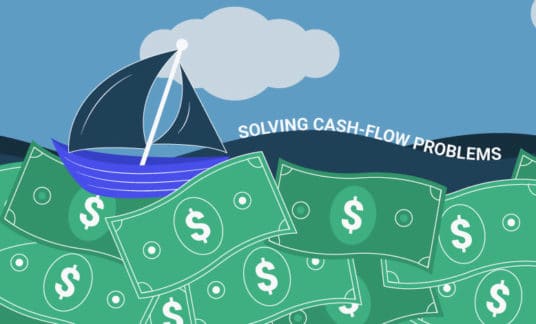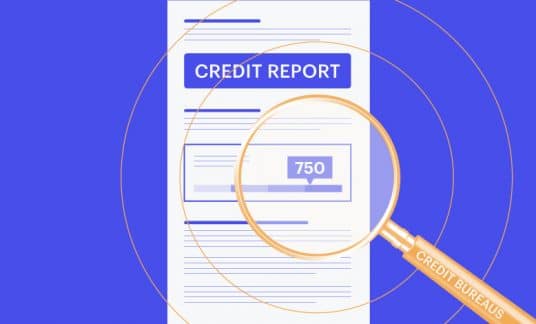Whether you’re a home buyer or real estate investor, you may find yourself in circumstances where you don’t qualify for a conventional mortgage from larger financial institutions (i.e., one that follows guidelines from Fannie Mae and Freddie Mac.)
The good news is that you can still go ahead with your real estate purchase by taking out a portfolio loan. Here’s what you need to know about this type of mortgage loan, the pros and cons, as well as how to select one that meets your needs.
What’s a Portfolio Loan?
A portfolio loan is serviced by the entity that issues the money, which means that the lender keeps the debt on its portfolios to earn consistent interest. Unlike conventional (or conforming) loans, portfolio loans aren’t sold to other lenders on the secondary market.
These loans are often issued by smaller banks and credit unions, instead of large lenders (e.g., Chase, Wells Fargo, etc.) They typically don’t meet Fannie and Freddie guidelines, and the lenders create their own underwriting guidelines for these loans. Because they also assume more risks, they charge a premium rate and closing fee.
Portfolio loans offer more options to borrowers, especially for those who don’t qualify for a loan or mortgage under the conventional lending system — for example, people who have bad credit, are going through bankruptcies or foreclosure, are tax aliens, have student loan debts, are foreign nationals, or have high net worth but no documented income.
These loans are also used by investors to finance investments in residential real estate or purchase multiple properties at one time. They are also used to buy properties that might not be eligible for traditional financing options (e.g. have electrical issues, exposed wiring, missing fixtures, damaged flooring, water damage, non-compliant updates or cracks in the foundation.)
There are a few types of portfolio loans, including:
- Balance sheet portfolio loan: The loan is kept on the lender’s balance sheet instead of being sold on the secondary mortgage market. It’s generally used by investors or homeowners who don’t qualify for conforming loans because of credit score, debt-to-income ratio, or a property’s condition.
- Blanket mortgage portfolio loan: A loan that finances 2 or more investment properties under a single mortgage. Because it can finance more than 10 properties (compared to 4-10 properties by conforming loans), it’s used by investors to consolidate a rental portfolio’s rates, terms and payments.
- Jumbo portfolio loan: It exceeds the maximum Fannie Mae loan limits ($484,350) and typically has stricter qualifications because of the large loan amount. They’re popular among buy-and-hold investors for financing 1- to 4-unit properties because they’re more flexible than government-sponsored loan products.
- Cash-out refinance portfolio loan: It’s used to extract equity from an investment property by replacing an existing mortgage with a new long-term loan. The money from a cash-out refinance isn’t taxed and can be used for any purpose, such as rehabs, renovations and bridge loans.
Portfolio Loan Qualifications
Each lender has its own set of guidelines for the different types of portfolio loans. Here are some typical qualifications for taking out a portfolio loan for residential real estate investment:
- Personal credit score: 600 or higher
- Debt service coverage ratio (DSCR) which is the amount of cash flow for covering debt payments: 1.2 times or higher
- Minimum rental occupancy rate: 90%
- Stable occupancy: 3 or more months of seasoning
- Cash reserves: 6 or more months
- Debt-to-income ratio: 36% to 45%

What’s a Portfolio Mortgage Lender?
A portfolio lender is a bank or financial institution that originates mortgage loans, according to Investopedia. Instead of selling the loan on the secondary market, it keeps the debt in its loan portfolio. Because these lenders assume more risk than a traditional lender, they tend to charge higher interest rates and fees for servicing the loan.
Here are some of the top portfolio loan lenders:
CoreVest
A one-stop-shop portfolio lender that offers several options, such as short-term fix-and-flip loans, ground-up construction, and permanent
- Website: corevestfinance.com
- Phone: 844-223-2231
- Email: [email protected]
- Facebook review: 4.2/5
Visio Lending
Having, as they state, “bought, sold, or financed more than $275 million in residential real estate nationwide,” Visio Lending caters to landlords seeking long-term financing or cash-out opportunities to grow their portfolios.
- Website: visiolending.com
- Phone: 888-521-0353
- Email: [email protected]
- Trustpilot review: 4.5/5
LendingOne
The company has invested over $500 million in real estate projects and its aggressive new construction loan product makes it an ideal choice for investors and developers investing in ground-up construction.
- Website: lendingone.com
- Phone: 866-780-9245
- Email: [email protected]
- BBB rating: A+
Pros and Cons of Portfolio Loans
Before applying for a portfolio loan, you should consider the advantages as well as the potential downsides of this borrowing strategy.
Pros
- Loan approvals: It’s often easier to qualify for a loan from a portfolio lender than a traditional lender because a portfolio lender doesn’t have to adhere to underwriting guidelines specified by secondary market buyers. It puts homeownership within the reach of buyers who might otherwise be unable to take out a mortgage under traditional guidelines.
- Flexibility: Portfolio lenders are usually smaller, privately owned financial institutions that can offer more flexible loan structures. For example, they can adjust the terms of the loan to accommodate your financial circumstances.
- Investor-friendliness: Portfolio loans are often more favorable to property investors. For example, lenders usually don’t limit how many properties you can purchase simultaneously or require the property to meet certain conditions.
Cons
- Prepayment fees: You may be charged a prepayment fee, which adds to the overall cost of the loan. Even though federal laws limit the amount lenders can charge and you can (and should!) negotiate your prepayment fees, it’s still an additional and often unexpected expense.
- Higher Interest Rates: A portfolio lender often charges higher interest rates to offset the risks they assume. Also, these lenders are likely to increase their variable rates more rapidly if the Fed raises the interest rate to maintain profit margins.

Find the Best Portfolio Mortgage Lender For Your Needs
To find a portfolio lender that can best meet your needs, you should consider the following:
- Your credit score and credit history: If you have a better credit score, you’d likely have more options and be able to negotiate for more favorable terms.
- Qualifications: Borrower qualifications and property conditions can affect eligibility and interest rates.
- Loan costs: Consider all the costs associated with taking out the loan, including loan origination fees, closing costs, prepayment penalty and appraisal fees.
- Terms: Available repayment schedules can span from 1 to 30 years and they impact the amount of interest you’ll pay.
- Funding time: Make sure that the time to close and fund the loan will work for your schedule.
- Loan amount: Most loans have a minimum and/or maximum loan amount. For example, balance sheet portfolio loans typically have a minimum of $100,000 and no maximum while jumbo portfolio loans have a minimum of $484,351 and the maximum varies by state.
When to Pursue a Portfolio Loan
Portfolio loans provide the opportunity for homebuyers and investors who don’t qualify for conforming loans to obtain funds for real estate purchases. If you’re considering a portfolio loan, make sure you understand the terms, costs and requirements associated with each option so you can weigh the pros and cons and make an informed decision that will serve your best interest.










